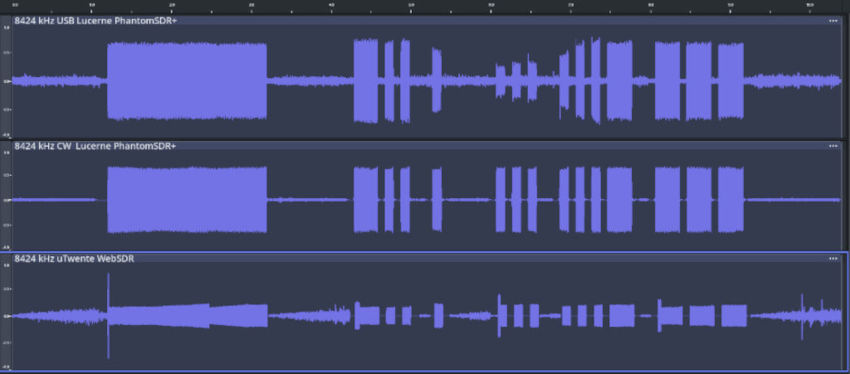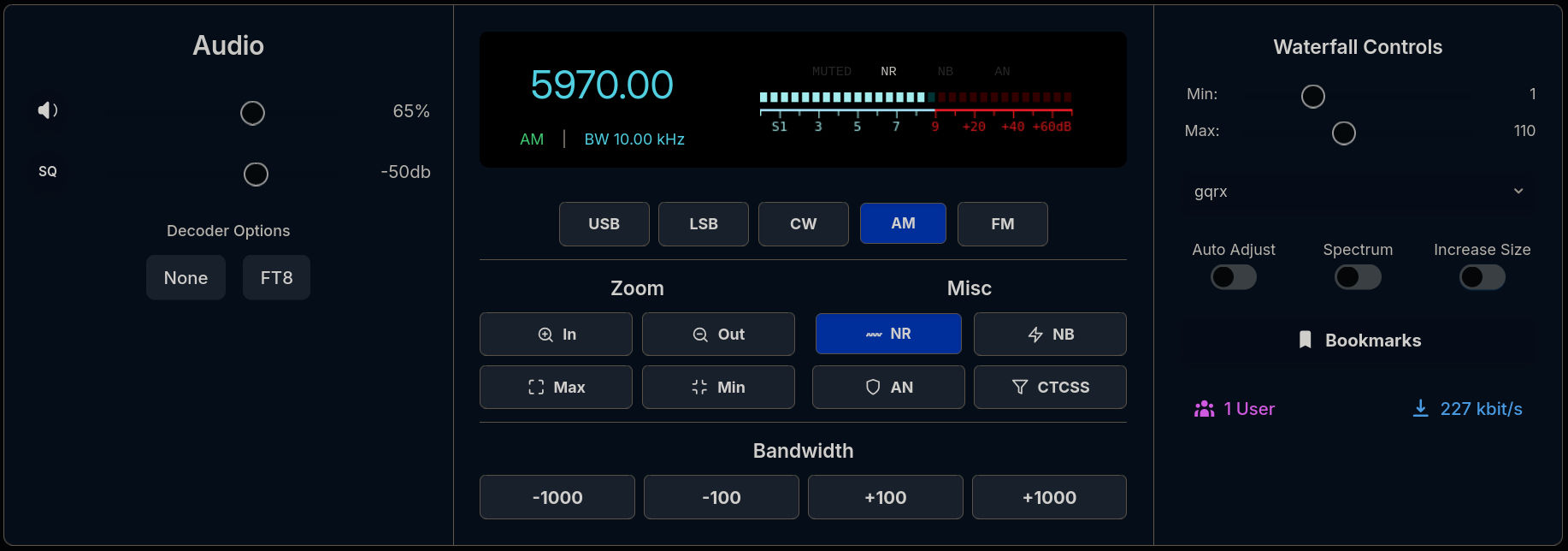
I have never been much of a believer in fate and predestination, but heck if I don't see it happen sometimes. After writing up my summer 2024 commentaries about the state of WebSDRs, and drilling down on what is needed for more wideband sites, a new wideband WebSDR has popped up. This new software, called PhantomSDR Plus, has the makings of a true standard for modern WebSDRs. Friends, the ringer has arrived!
What is special about PhantomSDR is that it can accept a full 30 MHz of digitized spectrum from the RX-888 mk2 (a sample rate over 60 MHz), present users a zoomable waterfall of that spectrum, receive AM/SSB/CW modes, and accommodate many more users than the standard WebSDR. Phantom SDR can work with several different makes of SDR hardware, if you don't use the RX-888. Similarly to the KiwiSDR and some OpenWebRX sites, PhantomSDR will include decoder modules for FT8 and other digital modes.
Note: Use the software fork called "Phantom SDR Plus" since it is being developed much faster than the original version. Not only does the 'Plus work better, it is getting built in digital decoder modules for special modes, so you will not to use a separate decoder , such as fldigi or MultiPSK.
PhantomSDR appears to use Fast Convolution in its digital signal processing (DSP), which can take a very wideband sampled spectrum and split it into a huge number of individual channels for users to simultaneously tune in. Fast Convolution is the basis of capabilities in the KA9Q DSP software, and seems to be in use on the flagship University of Twente WebSDR. PhantomSDR is especially powerful, since it does not require an FPGA for doing its DSP (as in KiwiSDRs), nor is it bound to the CPU (as in the standard WebSDRs), but can pass processing off to the GPU if available. Thus, PhantomSDR runs nicely on modest computers.
I am especially pleased at the quality of the demodulated signals from those sites running the RX-888 mk2. I often listen to CW in the ham bands, and the beat notes are clean and undistorted. AM sounds great, and it is a pleasant experience to tune in a music station like Radio 208 from Copenhagen.

PhantomSDR is quite fresh and in active development. So fresh, in fact that one can look at the PhantomSDR+ GitHub Repository in the morning, then come back in the afternoon to find new changes in the code. As I am writing this, a whole interaction is ongoing between two SDR site operators and Steven9101, the developer of the "Plus" fork. They are working out the best defaults for various signal modes, and which automatic gain control (AGC) settings are best. Testing, feedback, and revisions are happening on a daily basis.

The control set is being worked out, and things will probably shift around during the near term. I am hoping we shortwave nerds will soon see something which is easy to tune and adjust for band conditions, but is not too cluttered. Developer Steven9101 is working hard and using his sense of web design to create a good looking and functional web interface.
Here are links to the current wideband receivers using the PhantomSDR interface:
- The source list is at sdr-list.xyz.
- Wideband PhantomSDR+, Heppen, Belgium, by ON5HB
- Wideband PhantomSDR+, Bisag, Croatia, by 9A7OF
- Wideband PhantomSDR+, Aachen, Germany
- Wideband PhantomSDR+, Nuernberg, Germany
- Wideband PhantomSDR+, Reichenbach, Germany
- Wideband PhantomSDR+, Athens, Greece, by SV1BTL
- Wideband PhantomSDR+, Neochori Chalkidiki, Greece, by SV2AMK
- Wideband PhantomSDR+, Patra, Greece, by SV3DVO
- Mediumwave PhantomSDR+, Gillonnay, France
- Wideband PhantomSDR+, Gillonnay, France
- Wideband PhantomSDR+, Sardinia, Italy
- Wideband PhantomSDR+, Lucerne, Switzerland, by HB3XDC
- Wideband PhantomSDR+, Rigi Scheidegg, 1660m, Switzerland, by HB9RYZ
- Wideband PhantomSDR+, Zug, Switzerland
- Wideband PhantomSDR+, Dahlonega, Georgia, USA
© 2005 - 2025 AB9IL.net, All Rights Reserved.
Written and curated by Philip Collier / AB9IL.
About Philip Collier / AB9IL, Commentaries and Op-Eds, Contact, Privacy Policy and Affiliate Disclosure, XML Sitemap.
This website is reader-supported. As an Amazon affiliate, I earn from qualifying purchases.